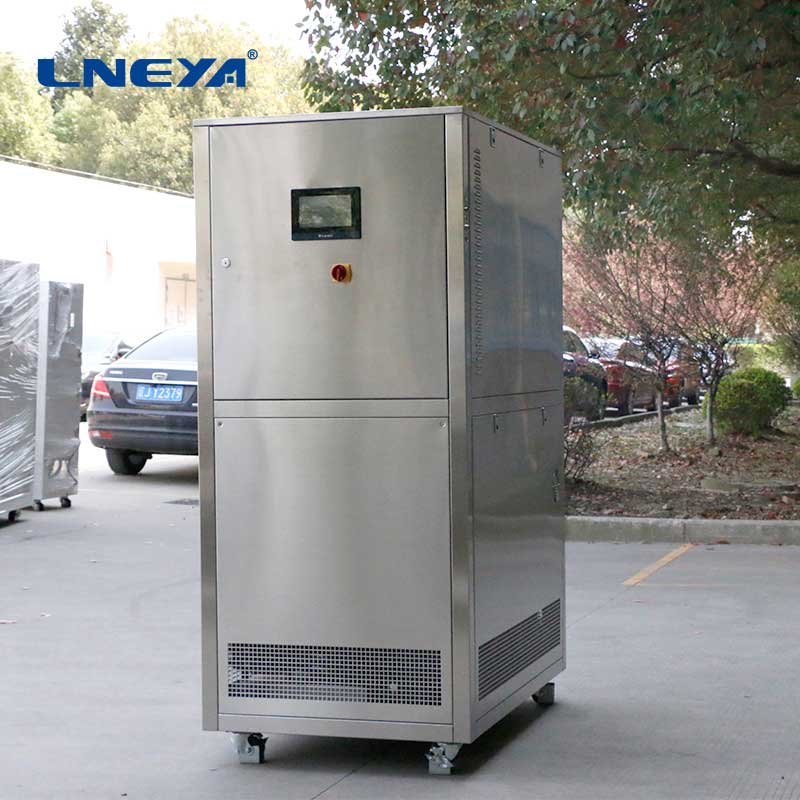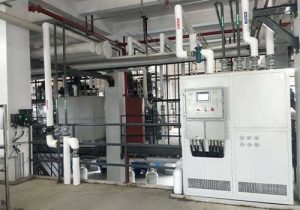remote evaporator chiller
Remote Evaporator Chiller: A Comprehensive Guide
In the realm of modern cooling technology, remote evaporator chillers have emerged as a sophisticated solution, catering to a wide range of cooling needs across various industries. Their unique design and functionality set them apart from traditional chiller systems, offering distinct advantages in specific applications.

Working Principle
The defining characteristic of a remote evaporator chiller is the physical separation of the evaporator from the main chiller unit, which typically houses the compressor, condenser, and other major components. This separation allows for greater flexibility in system design and installation.
The refrigeration cycle in a remote evaporator chiller operates in a manner similar to that of a conventional chiller. It starts with the compressor, which raises the pressure and temperature of the refrigerant gas. The high – pressure, high – temperature refrigerant then flows to the condenser, where it releases heat to the environment, either through air – cooling or water – cooling methods, depending on the chiller type. As the refrigerant gives up its heat, it condenses into a liquid.
The liquid refrigerant then passes through an expansion valve, experiencing a sudden drop in pressure. This causes the refrigerant to evaporate and cool down significantly. Unlike in a traditional chiller where the evaporator is integrated with the main unit, in a remote evaporator chiller, the cooled refrigerant is piped to the remote evaporator. Here, the cold refrigerant absorbs heat from the fluid or air that needs to be cooled, such as the chilled water in a building’s HVAC system or the air in an industrial process area. The now – warmed refrigerant is then returned to the compressor to complete the cycle, continuously removing heat from the target area and maintaining the desired temperature.
Applications
Commercial Buildings
Remote evaporator chillers are highly suitable for commercial buildings, especially those with complex architectural designs or limited space for traditional chiller installations. In large office buildings, shopping malls, and hotels, the remote evaporator can be placed in areas where cooling is most needed, such as individual floors or specific zones. This allows for more precise temperature control, as each evaporator can be adjusted independently to meet the cooling demands of different areas. Additionally, by locating the noisy compressor and condenser units away from occupied spaces, remote evaporator chillers contribute to a quieter and more comfortable indoor environment.
Data Centers
Data centers generate a significant amount of heat from servers and other electronic equipment, requiring efficient and reliable cooling solutions. Remote evaporator chillers offer several benefits in this context. The ability to position the evaporators close to the heat – generating equipment enables rapid heat removal, improving the overall efficiency of the cooling system. This proximity reduces the length of the chilled water or air distribution lines, minimizing heat gain and pressure losses. Moreover, separating the noisy components from the data center floor helps maintain a quiet environment, which is beneficial for equipment operation and the comfort of maintenance personnel.
Industrial Manufacturing

In industrial manufacturing, remote evaporator chillers are used to cool various processes and equipment. For example, in food processing plants, they can cool the production lines, storage areas, and refrigeration units. The remote placement of the evaporators allows for targeted cooling of specific areas, ensuring the quality and safety of food products. In metalworking industries, these chillers can cool cutting fluids, machine tools, and other equipment, improving tool performance and extending equipment lifespan. The flexibility in installation also makes it easier to integrate the chiller system into existing manufacturing facilities without major disruptions.
Advantages
Design Flexibility
One of the primary advantages of remote evaporator chillers is their design flexibility. The separation of the evaporator from the main unit allows designers to optimize the layout of the cooling system based on the specific requirements of the building or industrial process. Evaporators can be installed in tight spaces, hard – to – reach areas, or areas with high cooling loads, providing customized cooling solutions. This flexibility is particularly valuable in retrofitting existing buildings or adapting to unique industrial setups.
Noise Reduction
Since the compressor and condenser, which are often the noisiest components of a chiller system, can be located away from occupied areas, remote evaporator chillers significantly reduce noise levels in indoor spaces. This is especially important in commercial buildings, hospitals, and educational institutions, where a quiet environment is essential. By minimizing noise, these chillers enhance the comfort and productivity of occupants and users.
Improved Indoor Air Quality
In traditional chiller systems, the presence of the evaporator within the indoor space may pose a risk to indoor air quality if there are refrigerant leaks or other issues. With remote evaporator chillers, the main chiller unit, which contains the refrigerant – handling components, is located outside or in a separate mechanical room. This reduces the potential for refrigerant leaks to contaminate the indoor air, improving overall indoor air quality and safety.
Challenges and Considerations
Piping Complexity
The separation of the evaporator from the main chiller unit requires the installation of extensive piping to connect the two components. This increases the complexity of the installation process and the potential for leaks or pressure losses in the piping system. Proper insulation of the refrigerant and chilled water pipes is crucial to prevent heat gain and energy losses. Additionally, the design and routing of the pipes need to be carefully planned to avoid interference with other building systems or industrial processes.
Heat Loss and Energy Consumption
Longer piping lengths between the chiller unit and the remote evaporator can result in heat loss, especially if the pipes are not adequately insulated. This heat loss can reduce the efficiency of the cooling system, increasing energy consumption. To mitigate this, high – quality insulation materials should be used, and the pipes should be regularly inspected for any signs of damage or degradation. Additionally, the design of the system should aim to minimize the length of the pipes wherever possible.

Maintenance Requirements
Remote evaporator chillers require regular maintenance to ensure optimal performance. Both the main chiller unit and the remote evaporator need to be inspected and serviced. Maintenance tasks include checking refrigerant levels, cleaning condenser coils, and inspecting the piping system for leaks or blockages. Due to the separation of components, accessing certain parts for maintenance may be more challenging compared to traditional chiller systems, requiring careful planning and the use of specialized tools and equipment.
Selection Criteria
Cooling Capacity
Determining the appropriate cooling capacity is crucial when choosing a remote evaporator chiller. Factors such as the size of the area to be cooled, the heat load generated by equipment or occupants, and the ambient temperature need to be considered. An undersized chiller will not be able to meet the cooling demands, while an oversized chiller will result in higher energy consumption and unnecessary costs.
Energy Efficiency
Energy efficiency is an important consideration, especially for long – term operation. Look for chillers with high – efficiency compressors, advanced heat exchanger designs, and variable – speed drives. Energy – efficient chillers not only reduce operating costs but also contribute to environmental sustainability by minimizing energy consumption and carbon emissions.
Compatibility with Existing Systems
If the remote evaporator chiller is being installed in an existing building or industrial facility, compatibility with the existing HVAC or process cooling systems is essential. Consider factors such as the type of refrigerant used, the pressure and flow requirements of the system, and the control interfaces. Ensuring compatibility will help ensure a smooth integration of the new chiller system and avoid potential operational issues.
In conclusion, remote evaporator chillers offer a unique and valuable cooling solution with distinct advantages in various applications. While they come with certain challenges and considerations, understanding their working principle, applications, advantages, and selection criteria can help users make informed decisions and effectively utilize these chillers to meet their cooling needs.
Related recommendations
How to Choose an Air-cooled Chiller?
1173How to Choose an Air-cooled Chiller? The first thing to consider when buying an air-cooled chiller is how to select it. Usually, we consider the following aspects: The cooling capacity of...
View detailsBattery Pack Test Water-Cooled Chiller System
1393Battery Pack Test Water-Cooled Chiller System The battery pack test water-cooled chiller system can realize the digitization of key experimental parameters in the entire reaction process and ...
View detailstypes of water chiller
191Introduction to Water ChillersWater chillers are refrigeration systems designed to cool water, which is then circulated to absorb heat from spaces, equipment, or processes. They play a critical r...
View detailschiller for water cooling
497Chiller for Water Cooling: Efficiency, Technology, and Market Trends Water chiller machines are essential components in heating, ventilation, and air conditioning (HVAC) systems, enabling the c...
View details
 LNEYA Chiller
LNEYA Chiller






HelloPlease log in